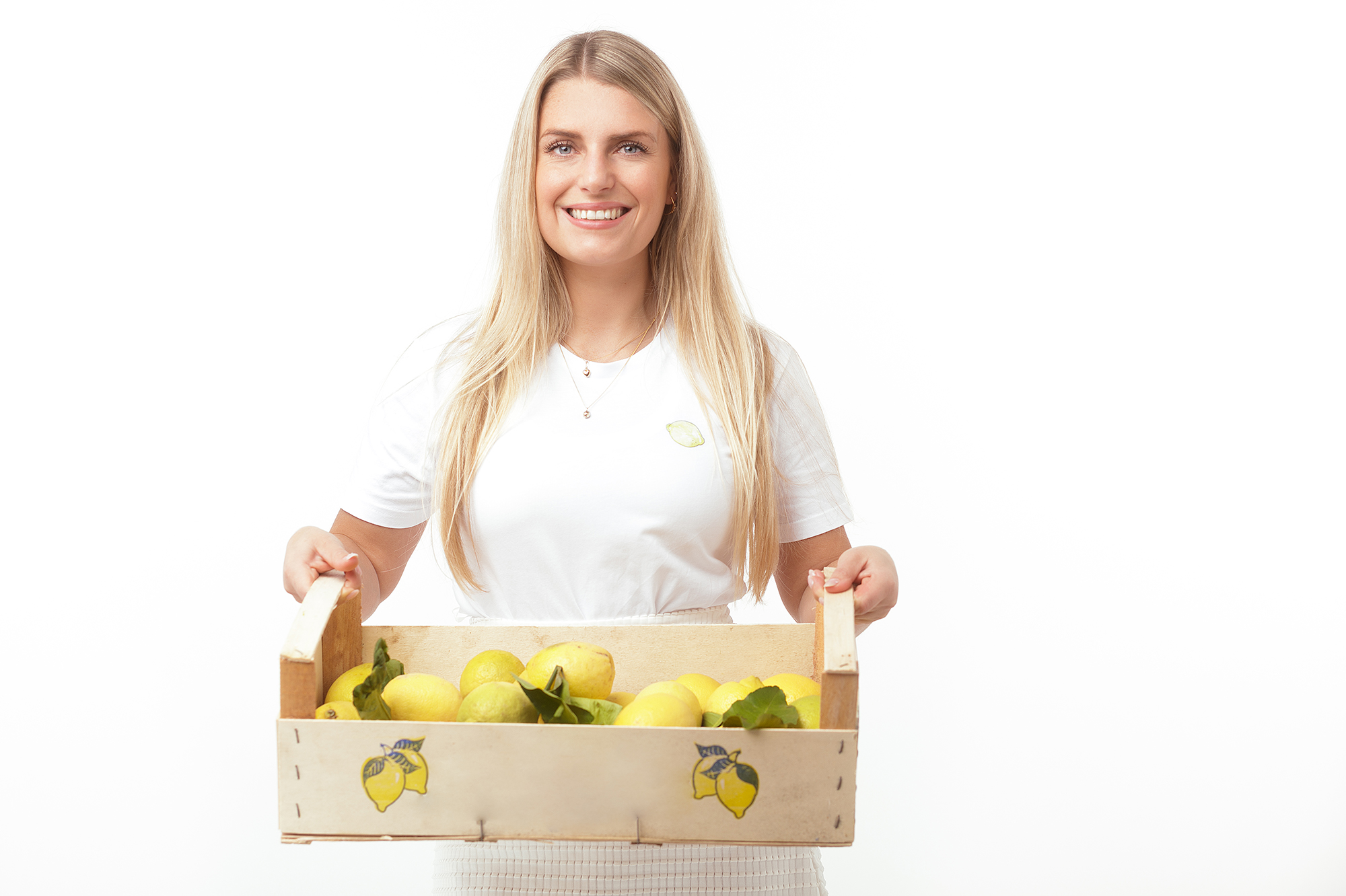Hoewel er in mijn kookboek ook veel informatie staat over dit onderwerp. Vind ik het superleuk dat Annemiek van Nutribites een gastartikel heeft geschreven. Ze gaat dieper in over de verschillende gezondheidsvoordelen van deze biologische citrusvrucht. Hét ingrediënt dat centraal staat op deze website. Aangezien het ook wel de koningin van de vitamine C genoemd!
Bovendien zijn citroenen niet alleen heerlijk in allerlei gerechten. Deze vrolijk gekleurde citrusvruchten hebben ook nog eens belangrijke voordelen voor onze gezondheid. Zie hieronder de zeven gezondheidsvoordelen van citroen:

Citroenen zijn behoorlijk rijk aan vitamine C. Met één citroen krijg je 31 mg van deze belangrijke vitamine binnen. Uit onderzoek blijkt dat het eten van groenten en fruit met veel vitamine C de gezondheid van ja hart ondersteunt [2]. Ook de vezels en plantenstoffen in citroenen dragen bij aan de gezondheid van je hart [3]. Daarnaast zijn er aanwijzingen dat de stof hesperetine in citroen het cholesterol kan helpen verlagen [4].Genoeg reden dus om deze gezond vrucht vaker te verwerken in recepten. Maak bijvoorbeeld eens deze carpaccio van gegrilde groenten met citroen.
Uit onderzoek blijkt dat citroenzuur kan helpen om nierstenen te voorkomen. Citroen heeft namelijk het vermogen om de hoeveelheid citraat in het lichaam te laten toenemen. Hierdoor ontstaat een minder gunstige omgeving voor de vorming van nierstenen [5]. Het is ook goed voor je nieren om minder zout te eten. Maak eens deze ingemaakte komkommer met citroen en kruidenzout.
Citroenen bevatten wat ijzer, maar dat is niet de reden dat ze helpen om bloedarmoede te voorkomen. Waar deze vruchten meesters in zijn, is de opname van ijzer uit plantaardig voedsel te verbeteren [6]. Ons lichaam neemt heel gemakkelijk ijzer op uit dierlijke bronnen, maar heeft moeite om het ijzer uit plantaardige bronnen te absorberen. De vitamine C in citroenen helpt ons lichaam daarbij. Bijvoorbeeld om het ijzer uit de doperwten in deze gezonde spread te halen.
Sommige onderzoekers denken dat de plantaardige verbindingen in citroenen ̶ zoals naringine ̶ een cel beschermend effect kunnen hebben [7]. Er zijn ook onderzoeken die hebben aangetoond dat mensen die de meeste citrusvruchten eten vaker gezonde cellen hebben [8]. In deze onderzoeken werden echter zeer hoge doses van deze stoffen gebruikt, veel meer dan je zou binnenkrijgen door het eten van citroenen. Verwacht dus vooral geen wonderen verwachten van deze vegetarische recepten met citroen, maar gezond zijn ze zeker wel.
VOOR GEZONDE DARMEN
Citroenen bestaan voor ongeveer 10 procent uit koolhydraten, meestal in de vorm van oplosbare vezels en enkelvoudige suikers. De belangrijkste vezel in citroenen is pectine, een soort oplosbare vezel die meerdere gezondheidsvoordelen heeft. Oplosbare vezels kunnen de darmgezondheid verbeteren en de vertering van suikers en zetmeel vertragen. Dit heeft een positief effect op je bloedsuikerspiegel. Om van deze voordelen te profiteren, moet je wel de hele partjes met vruchtvlees eten. Dat kan bijvoorbeeld met dit recept.
Citroensap kan bijdragen aan een gezonde bloeddruk, zo blijkt uit diverse onderzoeken. Zo is er een onderzoek waaruit blijkt dat citroensap kan helpen om de bloeddruk te verlagen bij mensen met ene hoge bloeddruk [9]. Uit een ander onderzoek blijkt dat het voor een lagere bloeddruk vooral effectief is om naast het nuttigen van citroensap ook te wandelen of aan een andere vorm van lichaamsbeweging te doen [10]. Neem deze lekkere smoothie met citroen dus vooral mee op je wandeling en geniet er met volle teugen van.
Dat het belangrijk is om gezond te eten en leven was je waarschijnlijk al bekend, maar het kan wel eens verwarrend zijn wat nou precies de juiste manier is. Denk bijvoorbeeld aan alle media die hier redelijk dwingend in kunnen zijn. Ik ben van mening dat een gezond bestaan vooral te maken heeft met gevarieerd eten, allerlei kleuren groenten en fruit eten elke week. Af en toe vis, soms vlees en meerdere keren per week bijvoorbeeld vegetarisch of zelfs ‘vegan’ eten. Gebruik biologische citroen om je eten verrassend lekker te maken en ook door het gebruik van de citroenzeste heb je minder zout en suiker nodig.

Blijf op de hoogte van Jadis haar culinaire website & gelijknamig kookboek
Blijf op de hoogte
Blijf op de hoogte